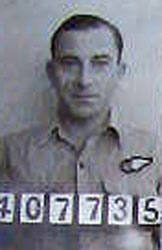On the night of 31st July / 1st August 1942 the crew of this 460 Squadron aircraft were tasked with flying an operational flight to bomb Dusseldorf and left Breighton at 23.47hrs. They bombed the target from 8,000 feet at 02.11hrs but the aircraft sustained damage by flak which injured the wireless operator. The aircraft is believed to have landed at Breighton at 04.46hrs and the injured airman received treatment.
Pilot - Sgt James Christopher Pearson RAAF (404941), of Manly Vale, New South Wales, Australia.
Bomb Aimer - Sgt Ronald William Lawton RAAF (406599), of Boulder City, Western Australia.
Navigator - Sgt Lawrence Matthew John Evans RAAF (407735), of York, Western Australia.
Wireless Operator / Air Gunner - Sgt A L Smith RAAF. Injured.
Rear Gunner - Sgt Reginald George Cox RAAF (402589), of Sydney, New South Wales, Australia.
On 10th September 1942 Pearson, Lawton and Evans were on board Wellington R1695 on Ops to Dusseldorf ditched off Norfolk after suffering engine failure out-bound. Lawton and Evans were rescued and taken to hospital but the remaining three crew including Sgt Pearson were not found and are commemorated on the Runnymede Memorial. Sgt Pearson was twenty seven years old. He was born on 31st December 1914 in Hornsby, New South Wales and enlisted in Brisbane.
Ronald Lawton was born on 18th April 1911 in Boulder City, Western Australia and enlisted in Perth. He was later commissioned and was awarded the DFC for service with 460 Squadron, Gazetted on 17th August 1943 but not presented until 9th November 1944 by which time he had returned to Australia and was presented with it at Government House, Perth. He was also awarded the Bar to the DFC, Gazetted on 6th June 1944, again for service with 460 Squadron and presented on the same date as his DFC. The citation for his DFC has not been located but the citation for his Bar to the DFC reads.. "F/O Lawton, now on his second tour of operational duty, has taken part in attacks against such strongly defended objectives as Berlin, Leipzig, Augsburg, Stettin and Frankfurt. As an air bomber he has pressed home the attacks with a complete disregard of enemy opposition. This officer's coolness, co-operation and devotion to duty have contributed much to the successes attained by his crew."

Lawrence Evans was born on 3rd October 1919 in York, Western Australia and enlisted on 4th January 1941 in Adelaide but was living in St.Leonards, South Australia at the time. On arrival in the UK he trained at 2 AOS at Millom from 15th December 1941 before heading to 27 OTU on 12th January 1942 and 20 OTU on 4th May 1942 and was posted to 460 Squadron on 20th June 1942. After recovering from his injuries in the ditching he was released from RAF Hospital Rauceby on 6th October 1942 and converted to the four engined bombers at 460 Conversion Flight. He later returned to 460 Squadron and completing his tour on Lancasters. He returned to Australia in 1944 and finished the War in the Pacific Theatre flying with 1 RAAF Squadron and 8 RAAF Squadron before being released.

Robert Cox was born on 31st May 1915 in Kogarah, New South Wales and enlisted in Sydney. F/Sgt Cox was killed on 22nd September 1942 while converting to fly in the four engined heavy bombers. He was the rear gunner of Halifax W1272 that crashed near Catterton, Tadcaster, Yorkshire with the loss of the four crew. He is buried at Harrogate Stonefall Cemetery, Yorkshire and was twenty seven years old.
Wellington Z1482 was built to contract B.97887/40 by Vickers Armstrong's Ltd. at Hawarden, Chester and was awaiting collection in February 1942. It was initially flown to storage at 12 MU at Kirkbride on 15th February 1942 and was then taken on charge by 460 Squadron at Breighton on 10th June 1942, believed as being a replacement for Wellington Z1394 lost a week earlier. As a result of minor flak damage on 22nd July 1942 Cat.A/FB damage was the result of the assessment and it was repaired on site. It sustained flak damage on the 1st August 1942 on Ops to Dusseldorf and then sustained battle damage on 28th August 1942 when it was attacked by a Junkers Ju88 on Ops to Kassel. In both cases the probably minor damage assessment of Cat.A/FB damage was deemed as severe as the damage got. None of the incidents appear directly on the aircraft's AM Form 78. On 2nd September 1942 a repair on site was begun by a team from Fairfields for some form of damage and probably relates to the repair following the 28th August 1942 incident. Once repaired it was returned to 460 Squadron on 12th September 1942. It was transferred to 142 Squadron at Grimsby on 17th September 1942 but this was only for a week. On 25th September 1942 it was transferred to 18 O.T.U. at Bramcote. On 15th October 1942 it was lost on a night navigation training flight, Cat.E(m) damage was recorded on the paperwork but it was later found to have crashed in France with then crew of five being killed. The Polish crew were carrying a live bomb and had probably opted to head to Germany to drop it instead of a practice bombing range.